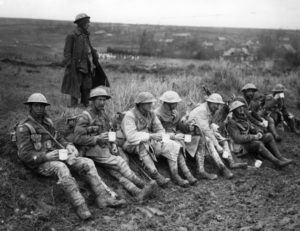Tea innovation is a surprisingly inexhaustible subject. Choose a topic that has shaped society, such as trade, war, health, literature, nutrition, crime, ship design, politics, household utensils, science and technology, retailing, and social reform, and you’ll soon find strong and deep connections with tea. It has been one of the most consistent and pervasive agents or accompaniments of change, including today, across three millennia and most of the globe. And the innovation and relevance of tea remain dynamic.
Beyond High Tea: Computers
Here are a few examples from tea innovation in science and technology, an area not generally associated with its traditions, image and associations:
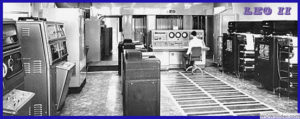
The world’s first full function business computer, LEO, developed by one of Britain’s best tea companies to handle the complexities of tea logistics.
Dominated the global market for twenty years.
For two thousand years, tea was always in the forefront of research and practice in health and medical potential. It has led to the creation of an ever-expanding new “wellness” beverage market centered on antioxidants and green tea;
Now, tea science is moving from the chemistry of tea’s six hundred plus compounds to molecular analysis and DNA “epigenetics.”
War
In the reverse direction, with tea becoming less and less a dynamic force, war and military strategy stand out. It’s an area where tea innovation is the opposite of what we need. But for wellover a thusand years war was a major source and consequence of tea innovation. The American Revolution was by no means the biggest or most impactful of tea conflicts:
- The two-thousand-year continuous dependence of China’s entire military on the tea for war horse trade with the mountain steppes tribes of the Tibet and Mongolia, along the 1,300 mile Tea Horse Road;
- The first “World War”: Emperor Hideyoshi of Japan’s invasion of China and Korea, his creation of the samurai as a unique warrior ethos, built around the rituals of the Tea Ceremony;
- Two Opium Wars where the British destroyed China’s civic society and obtained a 200-year lease on Hong Kong, directly to obtain the silver to pay for tea. Silver was the only currency the Chinese would accept, that amounted to over a third of its entire trade payments;
 The sensible not quaint embedding of tea in British war policy – buying up all the tea on the global market in 1942, tank and aircraft design today still including a tea boiler: tea was core to field comfort and light energizing, morale, alcohol-minimizing troop discipline, officer-noncom socializing.
The sensible not quaint embedding of tea in British war policy – buying up all the tea on the global market in 1942, tank and aircraft design today still including a tea boiler: tea was core to field comfort and light energizing, morale, alcohol-minimizing troop discipline, officer-noncom socializing.
Churchill described tea as Britain’s secret weapon in World War II. It sounds an exaggeration. Perhaps not.
Health
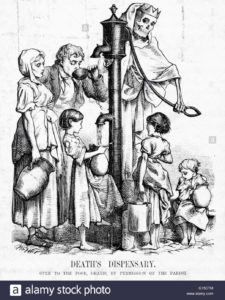 It’s impossible to do justice to the richness and relevance of tea innovation and impacts. It’s a grab bag of Trivial Pursuit gems, personalities, events, historical forces… Ending the deadliest scourge across history and nations: Water, with its ever-present near certainty of dysentery, cholera, typhoid; How Louisa Adams used tea to swing the deadlocked US Presidential election to her husband, John Quincy Adams; The epidemic of tea-related insanity among Irish Women after the Great Famine; A quarter of all tea consumption now in the Middle East; the duel between two society women over a tea event (with guns); 75% of all tea in 18th Britain smuggled and run by sometimes killer cartels; the establishment of the Fifth Dalai Lama as the military and spiritual head of Buddhism; George Washington’s lifetime love of tea; George Orwell author of one of the most famous novels, 1984, and the single most famous essay on tea.
It’s impossible to do justice to the richness and relevance of tea innovation and impacts. It’s a grab bag of Trivial Pursuit gems, personalities, events, historical forces… Ending the deadliest scourge across history and nations: Water, with its ever-present near certainty of dysentery, cholera, typhoid; How Louisa Adams used tea to swing the deadlocked US Presidential election to her husband, John Quincy Adams; The epidemic of tea-related insanity among Irish Women after the Great Famine; A quarter of all tea consumption now in the Middle East; the duel between two society women over a tea event (with guns); 75% of all tea in 18th Britain smuggled and run by sometimes killer cartels; the establishment of the Fifth Dalai Lama as the military and spiritual head of Buddhism; George Washington’s lifetime love of tea; George Orwell author of one of the most famous novels, 1984, and the single most famous essay on tea.
The marketing of tea has tended from its early commercialization in Britain to emphasize its traditions and lack of change — all the Royals, high tea, Jane Austen and remain resonant and Earl Grey aura (much of which is myth; Earl Grey tea limps into the occasional visibility only in the 1930s, for example). For tea lovers, there is both modernity in the traditional and vice versa. The great teas, growing cultures, tea crafting methods and terroirs remain grounded in their long and generally Buddhist legacy. As the coffee culture displaces tea among many younger people, it’s easy to see it as dull and passe and overlook the immense surge of new tastes, flavors, food-tea combinations, bars, spices and even alcohol infusion that is transforming markets. Bubble tea has surged across Asia and is arriving in your mall. Cheese tea sounds crazy; it’s good.
Tea Innovation: Six Worlds, Four Time Slices
This short blog maps the worlds of tea as innovation-with-tradition. Some of the examples are just interesting for their own sake. Others are very interesting and still relevant, especially how the apst history of tea still shapes the national policies and cultures of Sri Lanka, Kenya, and many other countries. Some are potentially of use to you in your own choices about tea, especially in evaluating the best of the best and why this puehr is a little expensive and that Shenzhen Silver Needle White is incomparable. One of the implicit messages is “Watch this space,” Watch for the new ambience, decor and panache of tea “places.” Try, maybe, the Little Fluffy Head café’s Dirty Mess Milk tea…
The mapping shows six of the many categories of worlds of tea innovation: Nutrition and Health, its antonym War, Science and Technology, Trade and Industry, The Teas, Politics and Social Reform. Others are omitted: Arts and Crafts, Literature, Cultures, Crime (think of tea monopolies, high taxes and addicts and you can see the link to tea smuggling, cartels, the American Revolution, tea adulteration and counterfeiting.)
It divides the more than two thousand year history of tea production into four broad time slices. The first is pre-1600, when tea began to be shipped to Europe in quantity. That was a long period marked by the dominance of Buddhism in shaping just about every aspect of tea. Even today, where you find tea in China, Korea, Korea, Indonesia, Malaysia, Sri Lanka and even Darjeeling in India, you will see temples.
The second time slice is the 18th century through to the early decades of the 20th. That’s the period when Britain and tea became synonymous. Napoleon belittled Britain as a nation of shopkeepers. He should have added and with a great Navy. Tea was shaped into a business by the British — Scots and Irish not just English — who democratized tea, built many of the still famous “English” brands (that are part of Indian and multinational firms), created bush to cup supply chains, and benefited from the colonial conquests of India, Ceylon, Africa, Burma and “leasing” of Hong Kong from a defeated Chinese Empire) and Royal Navy command of the trade routes. Tea and politics were highly intertwined, with its role as a core weapon of the Women’s Rights movement a standout.
The third slice is loosely defined as Within Living Memory. It’s very much tea as we now it: the tea bag, Earl Grey, iced tea, green tea growing as a health aid, and the rise of coffee as competitor. Finally, the Now and Future slice highlights the next emerging waves of change for so many worlds.
 The single theme that links all the time slices is the link between tea and health. It’s a very complex issue with the scientific evidence suggestive but not meeting the test of proof. There’s a general agreement among scientists that the antioxidants of tea and its many other compounds offer preventive and curative benefits. Claims that tea cures cancers and dementia and slow aging are at best optimistic extrapolations of the research that almost invariably ends with “more studies are needed of…”
The single theme that links all the time slices is the link between tea and health. It’s a very complex issue with the scientific evidence suggestive but not meeting the test of proof. There’s a general agreement among scientists that the antioxidants of tea and its many other compounds offer preventive and curative benefits. Claims that tea cures cancers and dementia and slow aging are at best optimistic extrapolations of the research that almost invariably ends with “more studies are needed of…”
The race is on to pin down and prove the encouraging general findings. The major development is that previous research has largely focused on the chemistry of tea. Now, biogenetics and the interaction between foods, drink,stress, pollutants and many other disturbers of the body are beginning to produce striking evidence of how tea affects “epigenetics”, the switching on and off of DAN genes.
Five or so years from now, there is a high probability that this area of tea innovation will standout as a scientific and medical milestone.
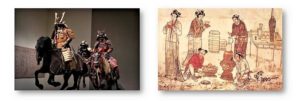 Tea and war were synonymous for millennia. Today, we think of Buddhism as peaceful and contemplative, which has always been true. But it was also militant. The Dalai Lama who became its spiritual leader was also the warrior who united Tibet after generations of civil wars and made a deal with the Mongol Khan that was partly based on ensuring control over the emerging tea and silk trade hubs and routes. The disgraceful Opium Wars were totally driven by the wish to break the China trade monopoly on tea. The foolish Stamp Act that imposed taxation on the American Colonies and led to the Revolution was driven by the power of the East India Company, Britain’s own tea monopoly. It was losing huge revenues and having to stockpile tea. The tax change aimed at undercutting the smugglers, among whom John Hancock, America’s richest man, was a reputed leader.
Tea and war were synonymous for millennia. Today, we think of Buddhism as peaceful and contemplative, which has always been true. But it was also militant. The Dalai Lama who became its spiritual leader was also the warrior who united Tibet after generations of civil wars and made a deal with the Mongol Khan that was partly based on ensuring control over the emerging tea and silk trade hubs and routes. The disgraceful Opium Wars were totally driven by the wish to break the China trade monopoly on tea. The foolish Stamp Act that imposed taxation on the American Colonies and led to the Revolution was driven by the power of the East India Company, Britain’s own tea monopoly. It was losing huge revenues and having to stockpile tea. The tax change aimed at undercutting the smugglers, among whom John Hancock, America’s richest man, was a reputed leader.
There have been no overt wars where tea was central since World War II. But there remain many tea-related conflicts that are the legacy of British colonialism. The brutal civil war in Sri Lanka that ended only a few years ago was between the native Singhalese population and the Tamil descendants of the indentured workers imported by the British to work on the new tea estates of Ceylon. There is a long and growing conflict between machines and labor in the tea industry. The artisan tradition that produces so many of the estimated 3,000 teas on the market is intensely manual — and expensive,with labor amounting to 60% of production costs in a business where prices continue to decrease over the long term. Machines for harvesting and processing the leaf transform costs — and largely reduce quality and variety. The tea bag versus whole leaf choice is in essence standardized lower grade broken up leaf and dust versus individualized whole leaf and processing.
There is a long and growing conflict between machines and labor in the tea industry. The artisan tradition that produces so many of the estimated 3,000 teas on the market is intensely manual — and expensive,with labor amounting to 60% of production costs in a business where prices continue to decrease over the long term. Machines for harvesting and processing the leaf transform costs — and largely reduce quality and variety. The tea bag versus whole leaf choice is in essence standardized lower grade broken up leaf and dust versus individualized whole leaf and processing.
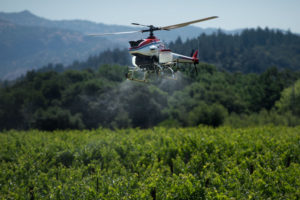
There is a clear major shift emerging in the use of machines and technology that has the potential to improve cost and quality. They include the use of drones for weeding, seeding and spraying, through “precision agriculture” that is reducing pesticide use by 90%; AI, image processing, machine learning models and emerging software, data management and hardware tools are creating solutions to major problems in tea quality, safety and transport: authentication of type and source, disease and pesticide analysis, counterfeit detection, etc.
Clonal teas, non-GMO breeding of new variants, have long been a major force in tea innovation — the entire Japanese tea industry is built on around eight clonals. Kenya, exports more tea than even China and India, but quality and price have been lower and lower. Its new purple tea is a breakthrough in “premiumization” and commands as much as six times the price of its commodity crop.
The new surge of science and technology driving new forms of tea innovation is the optimistic story offset by the equal urgency of many of hte same tools being core to addressing the negative one of ensuring sustainable development in the face of environmental degradation and climate weirding.
The technology developments in tea innovation are described in more detail in several recent Tea Journey blogs: Innovation in Tea: Watch These Spaces, A New Era of Tea Tech and Sci.
Tea trade history still defines much of tea trade modernity. If you are a devotee of China green teas, oolongs and whites, you are basically in the Buddhist pre-Europe era. Basic black, plain, cuppa, tea with milk, biscuits and sugar, English, bricklayer, one for the pot, etc… Your pleasures are built on the 18th and 19th century tea innovation. Tea bags, Earl Grey, flavored teas, roobois, herbals,.. Within Living Memory.
The Now and Future trade patterns are looking very different: less emphasis on traditional tea categories such as black, green, more links to food preferences, new ingredients (umeric tea is “hot” now and fennel is here), and overall a shift in players. Countries like Vietnam that has explicitly based its tea policy on cheaper and cheaper and less than subtle teas are searching for premiumization opportunities, mainly green teas. The new trade advantages come from special teas: Colombia makes almost not tea but is attracting raves and post-prandial sighs for itsunique long leaf teas. Vietnam green tea bag medicinal lose weight dust may evoke aromas of paint stripping but it produces some sublime wild and estate teas. Nepal, for long the producer of tea to smuggle into to be sold as Darjeeling premium tea, has several names like Guranse and Ilam that are joining pedigree ranks.
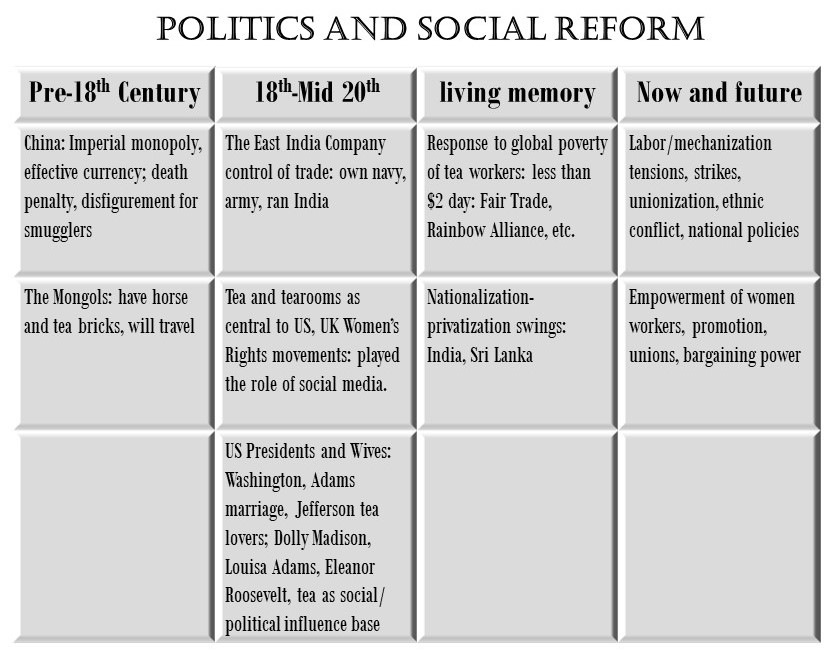 From a historical perspective, the links between tea and major social and political are pivotal, resonant, rich and still relevant. They are mainly of interest to tea lovers and often of compelling inerest. Theer’s a whole series of books written and to be written on “Tea and The History of…” Tea and The History of Women’s Rights, of Poverty, US Presidents and the White House, Economic Development…
From a historical perspective, the links between tea and major social and political are pivotal, resonant, rich and still relevant. They are mainly of interest to tea lovers and often of compelling inerest. Theer’s a whole series of books written and to be written on “Tea and The History of…” Tea and The History of Women’s Rights, of Poverty, US Presidents and the White House, Economic Development…
For Now and the Future, the forward-looking books deriving lessons from the histories include: Tea and Workers’ Rights, Mechanization and Labor Markets, Trade Regulation, and perhaps Taxation where the subtitle is Stupid Things to Avoid if you dont want smuggling and inconvenient revolutions. This inventorying of tea over the four time slices hows that it is always changing with often wildly variation trends — green tea dominant for centuries then displaced by black tea and now the growth engine; spice teas a niche and increasingly inventive, original and appealing to new markets; oolongs nearly absent in the groceries and supermarkets — 2% of US sales — but the online era of specialty sites is bringing the best of this wonderful, complex and varied peak of the artisan craft to easy access. The same applies to puehrs and top end whites. Great teas from the traditions of any era now find a market. Good teas from a new tradition of flavors, outlets and ingredients.
This inventorying of tea over the four time slices hows that it is always changing with often wildly variation trends — green tea dominant for centuries then displaced by black tea and now the growth engine; spice teas a niche and increasingly inventive, original and appealing to new markets; oolongs nearly absent in the groceries and supermarkets — 2% of US sales — but the online era of specialty sites is bringing the best of this wonderful, complex and varied peak of the artisan craft to easy access. The same applies to puehrs and top end whites. Great teas from the traditions of any era now find a market. Good teas from a new tradition of flavors, outlets and ingredients.
As for a review of these teas here… Why not just go and look for yourself. Tea innovation has two elements: the invention and the value. Producers, providers and researchers provide the invention; customers who find it determine the value. So, you choose.
